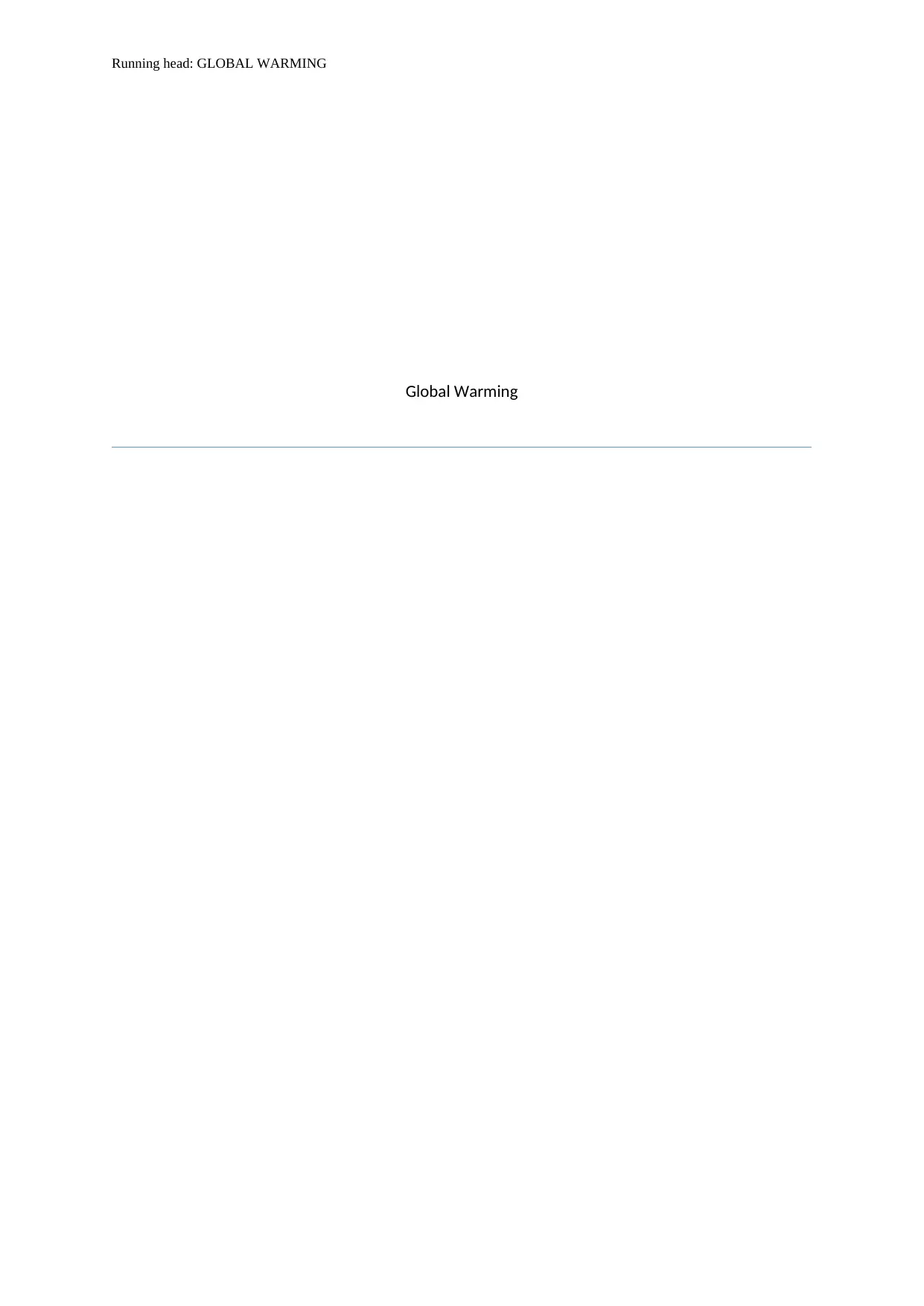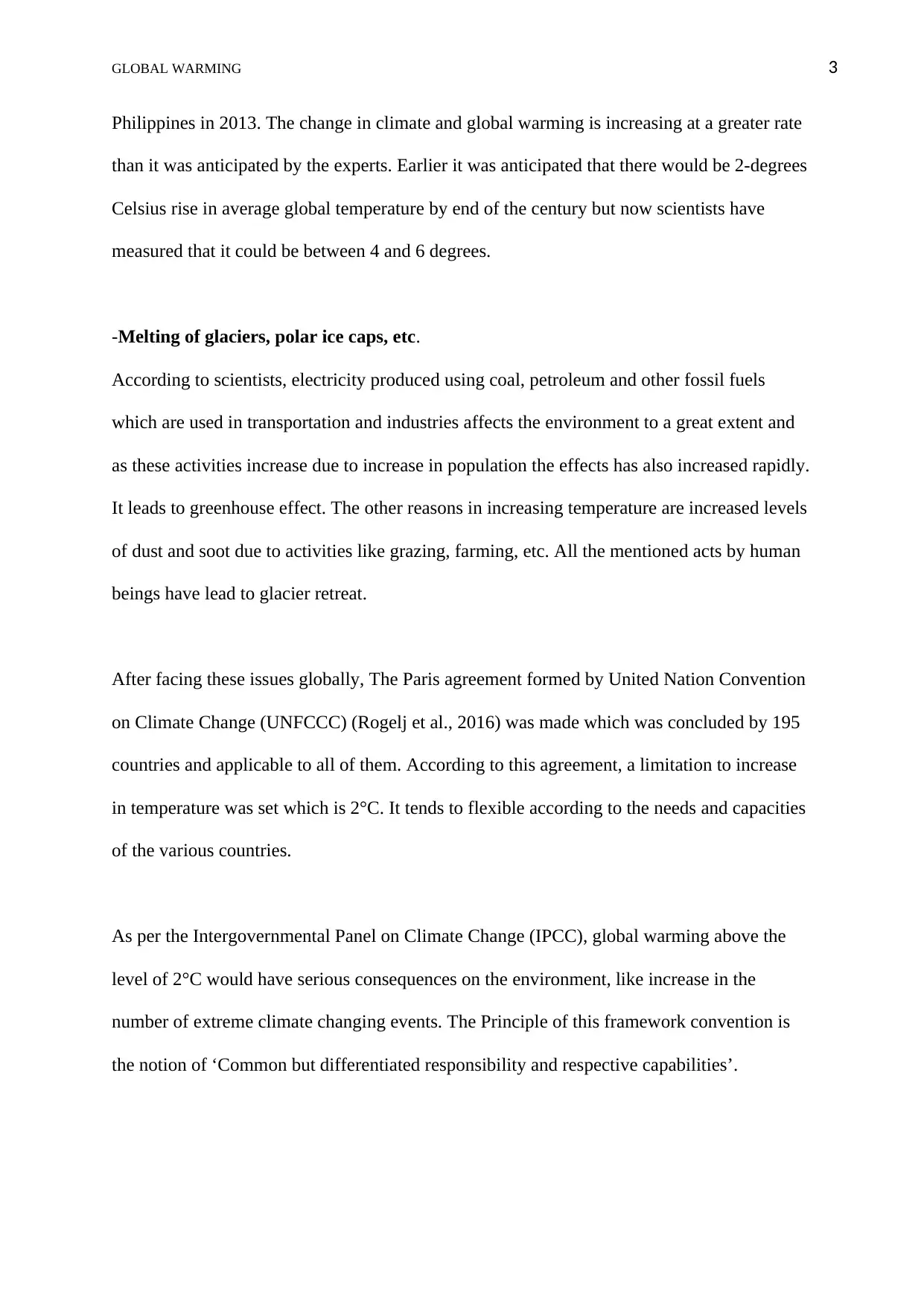An Analysis of Global Warming: Causes, Impacts, and Mitigation
VerifiedAdded on 2019/09/20
|5
|866
|198
Essay
AI Summary
This essay provides a comprehensive overview of global warming, defining it as an increase in the Earth's average surface temperature primarily due to the rise in greenhouse gases like carbon dioxide, stemming from fossil fuel burning and deforestation. The essay explains the 'greenhouse effect' and highlights the role of CO2, which remains in the atmosphere for extended periods, contributing to rising temperatures. It references predictions by the Intergovernmental Panel on Climate Change (IPCC) and discusses the impacts of global warming, such as increased storm intensity and frequency, and the melting of glaciers and polar ice caps, linking these effects to human activities. The essay also addresses the Paris Agreement, which sets a limit to the temperature increase, and emphasizes the importance of transitioning to renewable energy sources and implementing coastal protection measures. The conclusion underscores the urgency of global warming and the necessity for investment in clean energy resources.
1 out of 5












![[object Object]](/_next/static/media/star-bottom.7253800d.svg)